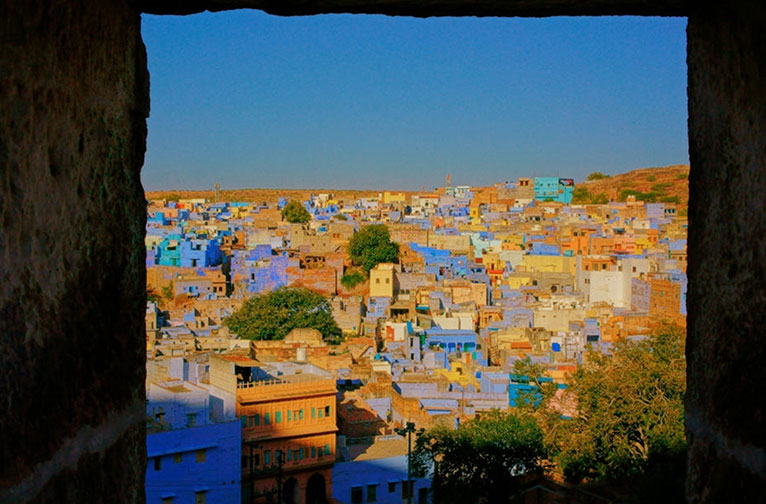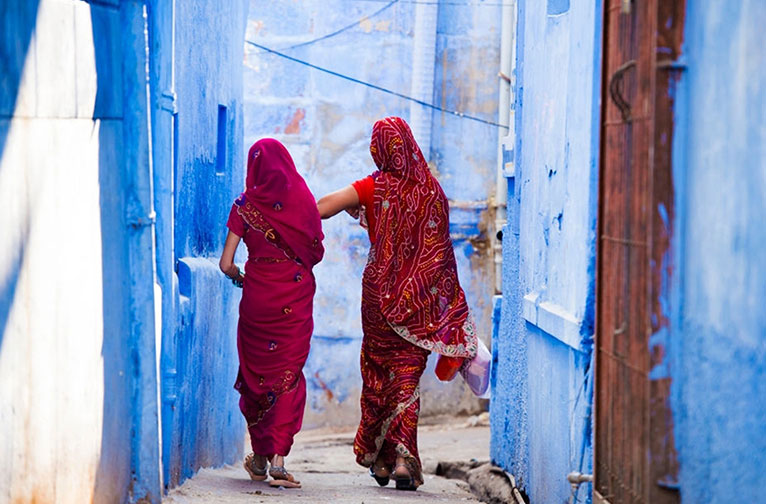Founded in 1459 by Rao Jodha, of the Rathore clan of the Rajputs, Jodhpur, the capital of the princely state of Jodhpur and the nucleus of the Marwar region, was strategic for its location on the old caravan route on the southern extension of the Silk Route from Central Asia. Much of its wealth was thus accrued from this carefully thought out location, on the edges of the great Thar Desert; it was the Marwari merchants who were to become legend for their ability to amass great wealth through their business acumen. It was under Maharaja Umaid Singh, that this late medieval period desert outpost, also known as ‘The Sun City”, really came to flourish and transform into a modern city.
We meet Maharaja Umaid Singh (grandfather of the present owner Maharaja Gaj Singh) again through the sumptuous palace built in Jodhpur’s Mehrangarh Fort. It was commissioned by the maharaja as a work-in progress to give his subjects employment during the great famine. This fabulous palatial residence, run partly as a hotel and a museum, is believed to be one of the world’s largest private residences. A walking tour of the Old Quarter of the ‘Blue City’ offers delightful insights into the mystery of why the city is painted blue; it reveals the pursuits and cultural world of the principle communities (such as the Brahmins) living in these heritage homes in the network of lanes; one gets to visit some of the old temples and even take time out to sample the local snacks of the city.


Stepwells are an important architectural feature of this desert outpost, where water is a precious commodity. While taking a round of the old city’s beautiful temples and shrines, one will discover the cultural and spiritual importance of these water resources, such as the Gulab Sagar Lake situated close Sardar Market area since 1788.
What can be deeply rewarding is a trip to the village of a local tribal community in the countryside. The Banjaras, a nomadic tribe in these parts, are now slowly putting down roots in these small village settlements near the city. While the menfolk still hit the road because of their occupation in livestock farming, the women now stay back and work in the fields and look after the household. You can enjoy charming vignettes of village life as you learn how to churn butter, grind flour on a chakki (stone grinder) and sip on chai accompanied by the local bread. Enjoy the delights of the beauty of their handmade jewellery and vibrant dress forms.
Food is another exciting window into Jodhpur’s cultural heritage. Renowned for its amazing street food and unique desert terrain-driven dishes, Jodhpur offers an opportunity to join a local family and learn how to cook some signature dishes. Great takeaway!
Centric to its productivity as a trade centre have been agricultural crops, wool, cattle, salt, hides, cotton textiles and polo equipment. One may spend hours on a tour of its bustling bazaars of great antiquity; on offer are opportunities to open up conversations with shop keepers and artisans for the amazing showcase of handicraft products, which include tie and dye cloth, block print textiles glass bangles, lacquerwork, felt and leather products, marble stonework and carpets.